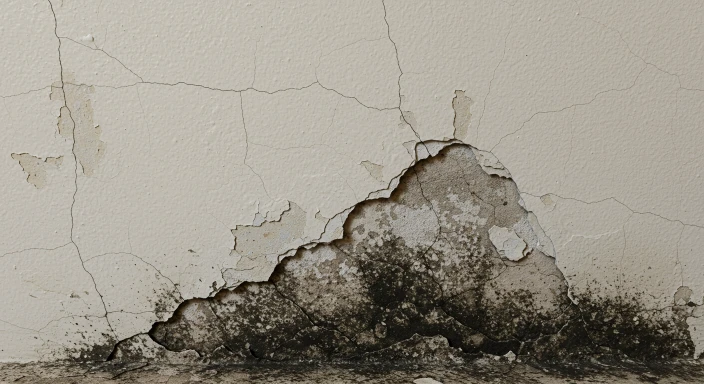
Mold compromises insulation by degrading material integrity, reducing thermal resistance, and introducing health hazards. Removal is necessary when mold has visibly spread across insulation or when air quality tests confirm spore activity in or around insulation systems. The risk increases with moisture-prone zones such as crawl spaces and exterior-facing walls.
Prompt removal prevents structural decay and airborne contamination. Mold-laden insulation cannot be restored to its original R-value or hygienic condition. The issue is common in humid environments like Kentucky, where seasonal shifts and crawl space dampness accelerate mold growth.
This guide outlines practical signs, technical comparisons, material behaviors, and removal timelines based on field-tested observations. Information reflects direct experience with insulation installs and removals across residential and light commercial properties.
| Property Affected | Impact of Mold Presence | Notes from Field Applications |
|---|---|---|
| R-Value (Thermal Resistance) | Decreases up to 30% | Mold compromises air gaps needed for insulation to resist heat transfer |
| Structural Form | Deforms or sags | Fiberglass batts collapse; foam can shrink or degrade |
| Air Quality | Releases spores | Contributes to respiratory issues, especially in sealed indoor spaces |
| Moisture Retention | Increases | Mold absorbs and retains humidity, creating ongoing problems |
| Odor and Staining | High | Strong, musty odor and visible discoloration often penetrate drywall |

| Insulation Type | Mold Susceptibility | Common Removal Triggers | Average Replacement Timeline |
|---|---|---|---|
| Fiberglass Batt | High | Water damage, visible mold, odor | 1-3 days from detection |
| Spray Foam | Moderate | Surface mold due to condensation | After confirming mold beneath top layer |
| Blown-In Cellulose | High | Absorbs and holds moisture | Immediate upon mold detection |
| Mineral Wool | Low | Resists mold unless saturated | Replace if fibers degrade |
Bonus Tip: In crawl spaces, moisture barriers should be inspected before This guide outlines practical signs, technical comparisons, material behaviors, and removal timelines based on field-tested observations. It draws from direct experience with insulation installs and insulation removal across residential and light commercial properties.. Often, vapor barriers fail first, leading to mold exposure.
| Property | Value Range (Unaffected) | Value Range (Mold Affected) | Test Standard |
|---|---|---|---|
| R-Value per inch (Fiberglass Batt) | 3.1 – 3.4 | 2.0 – 2.4 | ASTM C518 |
| Moisture Content (%) | 0.5 – 1.5 | 10+ | ASTM C272 |
| Airborne Spore Count (spores/m³) | < 200 | > 300-500 | EPA IAQ Guidelines |
Bonus Tip: Always seal rim joists in Kentucky basements. These are overlooked sources of moisture seepage that feed mold over time.
Thermal imaging and moisture meters detect temperature shifts and moisture buildup, often correlating with mold.
Replace all impacted areas, including adjacent zones. Mold can spread beyond what’s visible.
It resists mold but can support growth on the surface if condensation occurs. Check for cold bridging.
Cleaning is rarely effective long-term. Replacement costs vary by material but prevent repeat contamination.
For removal, replacement, or inspection of mold-affected insulation, contact:
Armored Insulation
Phone: (270) 331-4844
Email: [email protected]
Work with a team that handles insulation in humid, moisture-prone environments daily and knows how to stop mold before it spreads.
In humid conditions, visible degradation can begin in as little as 2-4 weeks.
Mineral wool and closed-cell spray foam are mold-resistant due to water repellency and density.
Yes. Mold spores can transfer to surrounding drywall, studs, and framing materials.
Mold remediation requires protective gear, negative air machines, and sealed disposal. DIY removal increases exposure risk.
Use mold-resistant insulation types, confirm proper vapor barriers, and ventilate the area before reinstallation.